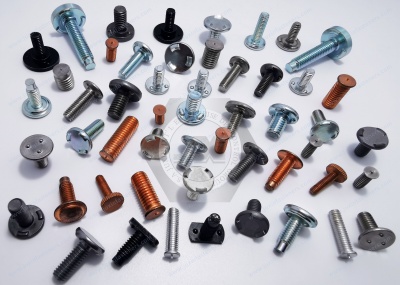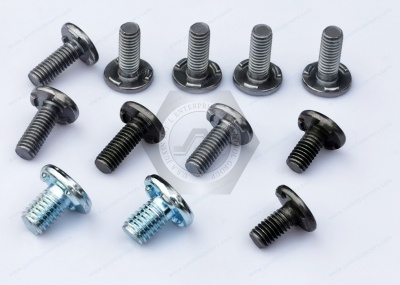Call Us
+86 136 6007 9809
Call Us
+86 136 6007 9809
Jun. 01, 2024
Welding Parameters, Quality Requirements, and Defect Prevention Measures for Automotive Body Fasteners
1. Bolt Weld Quality Inspection and Common Defect Handling
Bolt weld quality inspection generally includes visual inspection and non-destructive testing. Visual inspection focuses on checking the welding area of the bolt and the workpiece to ensure good fusion and the absence of splatter on the threads. Non-destructive testing involves assessing the strength of the bolt weld by striking the welded bolt at a 45° angle with a rubber hammer and checking for cracks at the bolt root. If no cracks occur, the weld is considered of acceptable quality. Common defects in bolt welding include splatter, weld bead, porosity, cracking, burn-through, false welds, incomplete fusion, and non-perpendicular bolts. Improper welding parameters, surface contaminants on the plate, misalignment of the welding gun, or poor equipment grounding typically cause these defects. Refer to Table 2 for a detailed list of standard bolt welding defects and their solutions. For high-quality carbon steel welding nuts fasteners and professional technical support, don't hesitate to contact us at adelajonly@gmail.com or visit our website at [Juxin Fasteners]https://www.juxinfasteners.com.


2. Nut Projection Welding
Nut welding is commonly performed using projection welding, a type of resistance welding. Projection welding ensures uniform weld seam strength, aesthetics, and durability without compromising thread accuracy. Projection welding equipment includes the body, pressure system, secondary circuit system, cooling system, transformer, and control system.
3. Nut Projection Welding Process and Quality Inspection Methods
In automotive body assemblies, commonly used nuts include hex nuts and spot welding nuts. Welding parameters such as welding current, time, and pressure are selected based on nut specifications and workpiece thickness for proper welding. After welding, a visual inspection is conducted to check the appearance quality, followed by torque tightening of the bolt to inspect the welded joint. The weld is deemed acceptable if the nut remains securely attached without loosening.
4. Analysis of Common Defects in Nut Projection Welding and Prevention Measures
Common defects in nut projection welding include incomplete welds, porosity, burn-through, and internal adherence of weld slag. Incomplete welds result from improper welding parameters, where inadequate welding current or pressure leads to insufficient fusion. Preventive measures include selecting the correct welding parameters and thoroughly cleaning the workpiece surface before welding to prevent porosity caused by oil and debris.
5. Engineering Applications
The article provides a practical example of bolt and nut projection welding on the front panel of a specific vehicle model, demonstrating practical engineering applications.
Conclusion
This article comprehensively analyzes welding parameters, welding processes, quality inspection methods, common defects, and preventive measures for automotive body fasteners. It offers practical guidance and recommendations for the industry.
Contact Us
Tel.:
+86 020 8621 0320
+86 020 3121 6067
E-mail:
Technical Support:
Navigation
SEND INQUIREY